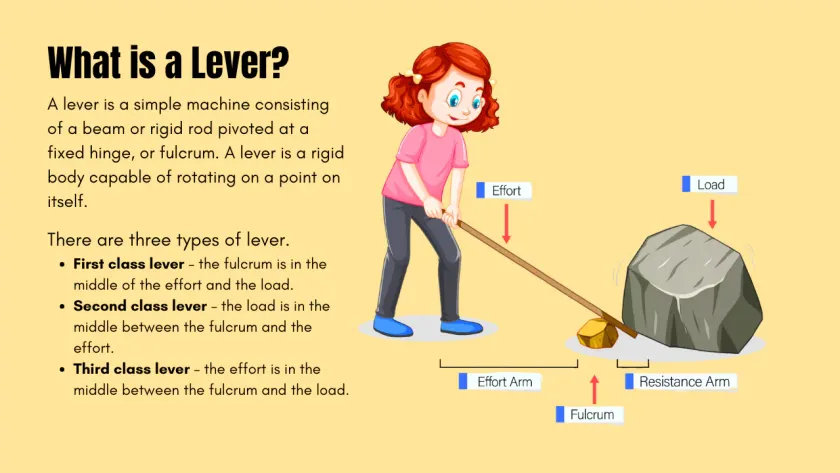
What Are Simple Machines?
Simple machines are basic mechanical devices that help us do work more easily by changing the direction or amount of force needed. They are the building blocks of more complex machines and have been used by humans for thousands of years. Understanding how simple machines work can help us better understand tools, engineering, and how things move.
The Six Types of Simple Machines
There are six main types of simple machines. Each one has a unique way of reducing effort or changing force:
- 1. Lever: A bar that rests on a pivot point (called a fulcrum) and is used to lift or move loads. Examples: seesaws, crowbars, and scissors.
- 2. Pulley: A wheel with a rope or cable around it. It helps lift loads by changing the direction of the force. Examples: flagpoles, cranes, and window blinds.
- 3. Wheel and Axle: A round wheel attached to a rod (axle) that rotates together. It reduces friction and makes movement easier. Examples: doorknobs, car wheels, and rolling carts.
- 4. Inclined Plane: A flat surface set at an angle to help lift objects with less force. Examples: ramps, slides, and loading docks.
- 5. Wedge: A device with one or two sloped sides used to split or cut objects. Examples: knives, axes, and doorstops.
- 6. Screw: An inclined plane wrapped around a cylinder that helps hold things together or lift materials. Examples: jar lids, bolts, and drills.
How Simple Machines Make Work Easier
Simple machines reduce the effort needed to perform tasks by multiplying force or changing its direction. For example, using a ramp (inclined plane) to push a heavy object up to a truck bed is much easier than lifting it straight up. A pulley lets you pull down to lift something up, using your weight to help.
Examples in Everyday Life
- A broom acts as a lever when sweeping the floor.
- Stairs are a type of inclined plane.
- A jar lid is a screw that keeps contents sealed tightly.
Combining Simple Machines
Many tools and machines we use today are combinations of simple machines. These are called compound machines. For example, a bicycle uses levers (brakes), wheels and axles, and pulleys (in the gears).
Why Learn About Simple Machines?
Simple machines are everywhere. Understanding how they work can improve your problem-solving skills, help you design better tools, and give you insight into how engineering works in the real world.
Fun Fact
The ancient Egyptians used ramps (inclined planes) and levers to build the pyramids!
Conclusion: Simple machines are powerful tools that help us do work more efficiently. Whether it's lifting, cutting, rolling, or fastening, these six devices play a big role in making life easier — and they’re the foundation of engineering.